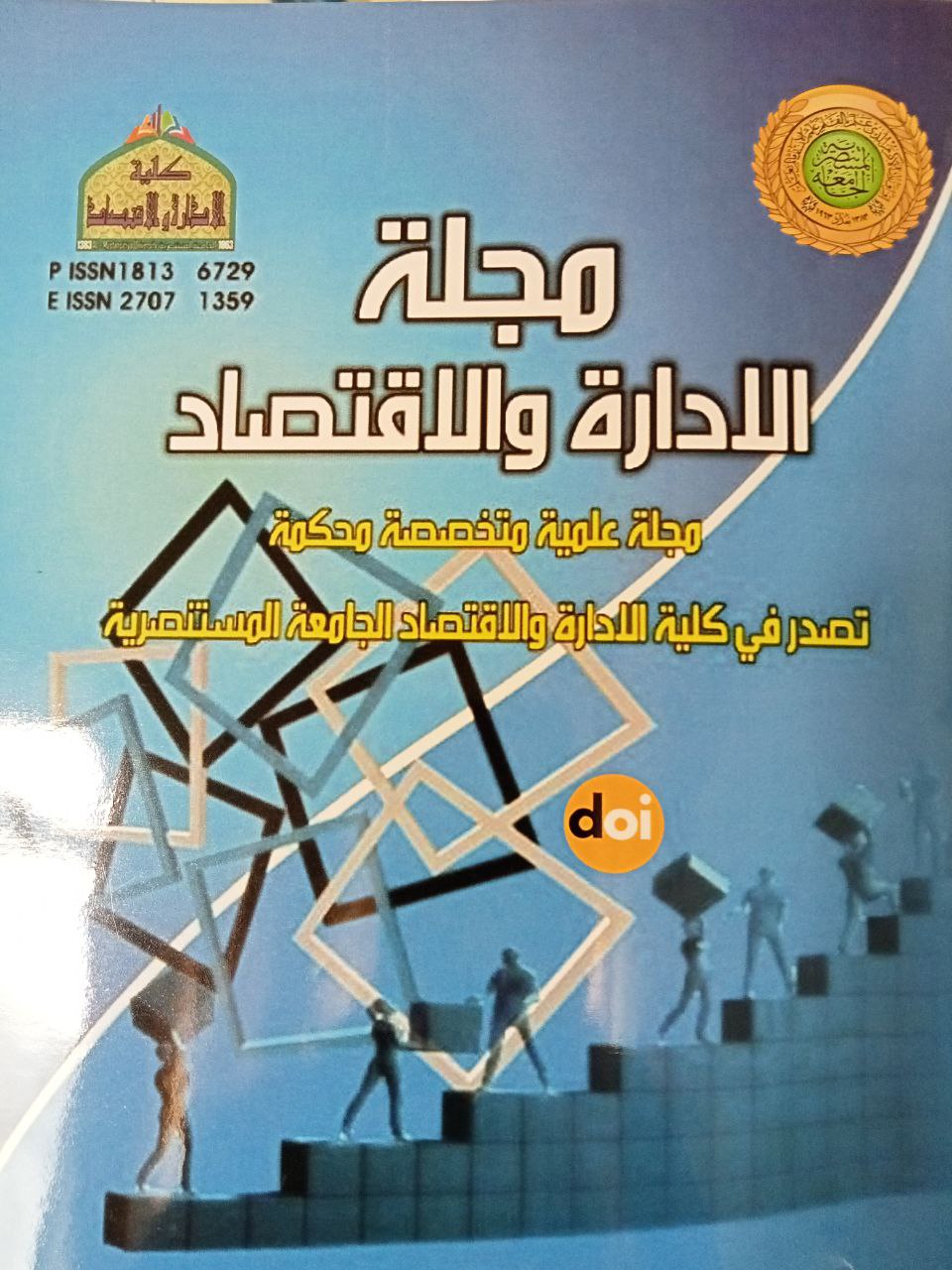Estimation of the epidemiological model (COVID-19) based on the system of multiple differential equations
DOI:
https://doi.org/10.31272/jae.i134.1210Keywords:
SIRD model, basic reproduction number, COVID-19, epidemics, nonlinear least squaresAbstract
The research deals with the use of one of the epidemic models, which is the (SIRD) model (exposed to infection S - infected I - recovered R - deceased D), which consists of a system of multiple differential equations (ODE) to cover the data on the spread of the Corona epidemic in Iraq for the period from the date of the first case of infection On (24/2/2020) until (22/2/2020), the model parameters are estimated according to the nonlinear least squares method for the reported data as well as predicting the development of the epidemic outbreak, and an important parameter was identified in the epidemiological models is the basic reproduction number) (R_0 is The expected number of secondary cases produced by the infected person early in the epidemic, and the results showed a decline in the spread of the epidemic as a result of taking vaccinations and increasing the preventive measures taken.
References
for coronavirus disease outbreak 2019 (COVID-19) in Algeria Al-Raeei, M. (2021). The basic reproduction number of the new coronavirus pandemicd with mortality for India, the Syrian Arab Republic, the United States, Yemen, China, France, Nigeria and Russia with different rate of cases. Clinical epidemiology and global health, 9, 147-149.
Al-Raeei, M., El-Daher, M. S., & Solieva, O. (2021). Applying SEIR model without vaccination for COVID-19 in case of the United States, Russia, the United Kingdom, Brazil, France, and India. Epidemiologic Methods, 10(s1).
Al-Raeei, M. (2021). The COVID-19 basic reproductive ratio using SEIR model for the Middle East countries and some other countries for two stages of the disease. Bulletin of the National Research Centre, 45(1), 1-7.
Behl, R., & Mishra, M. (2020). COVID-19 lifecycle: predictive modelling of states in India. Global Business Review, 21(4), 883-891.
Calafiore, G. C., Novara, C., & Possieri, C. (2020). A time-varying SIRD model for the COVID-19 contagion in Italy. Annual reviews in control, 50, 361-372.
…………..Cereda, G., Viscardi, C., Gherardini, L., Mealli, F., & Baccini, M. (2021). Dynamics of contagion and submerged infections during the second wave of the SARS-CoV-2 epidemic in the Italian regions.q
Ferrari, L., Gerardi, G., Manzi, G., Micheletti, A., Nicolussi, F., Biganzoli, E., & Salini, S. (2021). Modeling provincial covid-19 epidemic data using an adjusted time-dependent sird model. International Journal of Environmental Research and Public Health, 18(12), 6563.
Hasanli, R. (2021). A data driven epidemic model to analyze and forecast the dynamics of COVID-19 (Master's thesis, Middle East Technical University).
Korolev, I. (2021). Identification and estimation of the SEIRD epidemic model for COVID-19. Journal of econometrics, 220(1), 63-85.
Ogana, W., Juma, V. O., & Bulimo, W. D. (2021). A SIRD model applied to COVID-19 dynamics and intervention strategies during the first wave in Kenya. medRxiv.
Pei, L., & Zhang, M. (2021). Long-Term Predictions of COVID-19 in Some Countries by the SIRD Model. Complexity, 2021.
Pan, J., Gray, A., Greenhalgh, D., & Mao, X. (2014). Parameter estimation for the stochastic SIS epidemic model. Statistical Inference for Stochastic Processes, 17(1), 75-98.
Sameni, R. (2020). Mathematical modeling of epidemic diseases; a case study of the COVID-19 coronavirus. arXiv preprint arXiv:2003.11371.
Samsuzzoha, M. D. (2012). A study on numerical solutions of epidemic models (Doctoral dissertation, PhD thesis).
Sedaghat, A., Band, S., Mosavi, A., & Nadai, L. (2020, November). Predicting Trends of Coronavirus Disease (COVID-19) Using SIRD and Gaussian-SIRD Models. In 2020 IEEE 3rd International Conference and Workshop in Óbuda on Electrical and Power Engineering (CANDO-EPE) (pp. 000267-000274). IEEE.
Sedaghat, A., Band, S., Mosavi, A., & Nadai, L. (2020, November). Predicting COVID-19 (Coronavirus Disease) Outbreak Dynamics Using SIR-based Models: Comparative Analysis of SIRD and Weibull-SIRD. In 2020 IEEE 3rd International Conference and Workshop in Óbuda on Electrical and Power Engineering (CANDO-EPE) (pp. 000283-000288). IEEE.
Sen, D., & Sen, D. (2021). Use of a modified SIRD model to analyze COVID-19 data. Industrial & Engineering Chemistry Research, 60(11), 4251-4260.
Tsay, C., Lejarza, F., Stadtherr, M. A., & Baldea, M. (2020). Modeling, state estimation, and optimal control for the US COVID-19 outbreak. Scientific reports, 10(1), 1-12.
TSEGA, E. Fitting an Epidemiological Model to Transmission Dynamics of COVID-19. Journal of Mathematical Sciences and Modelling, 3(3), 135-138.
Wacker, B., & Schlüter, J. (2020). Time-discrete parameter identification algorithms for two deterministic epidemiological models applied to the spread of COVID-19.

Downloads
Published
Issue
Section
License
The journal of Administration & Economics is an open- access journal that all contents are free of charge. Articles of this journal are licensed under the terms of the Creative Commons Attribution International Public License CC-BY 4.0 (https://creativecommons.org/licenses/by/4.0/legalcode) that licensees are unrestrictly allowedto search, download, share, distribute, print, or link to the full text of the articles, crawl them for indexing and reproduce any medium of the articles provided that they give the author(s) proper credits (citation). The journal allows the author(s) to retain the copyright of their published article.
Creative Commons-Attribution (BY)









